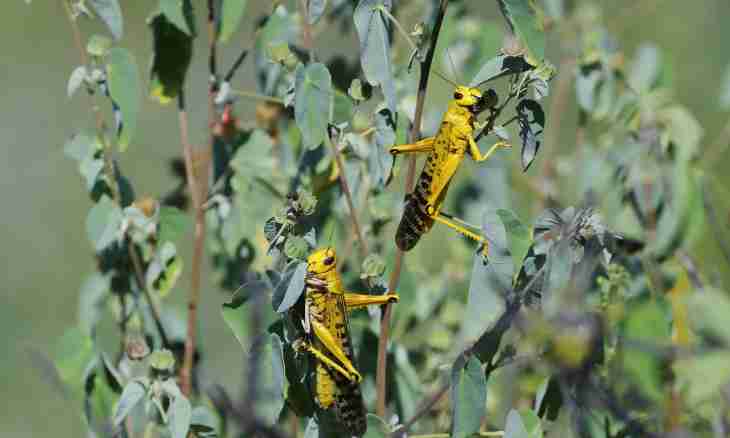""He ate only one grass, did not touch also a small insect..."" - it is said in the popular children's song about the green grasshopper who fell a victim of a gluttonous frog. Grasshoppers are often confused with their close relatives - a locust. Meanwhile, the grasshopper is far not so harmless as it is considered to be and also has a number of essential differences from a locust.
Both the grasshopper, and locust belong to the class insects (invertebrate arthropods), to group Orthoptera. At the same time the locust is carried to family by the presents locust, and a grasshopper - to family the real grasshoppers.
External differences of a grasshopper and locust
It is possible to distinguish a grasshopper from a locust, first of all, on appearance:
- at a locust short moustaches short, and at a grasshopper short moustaches long;
- at a locust the extended body, at a grasshopper a short thick body;
- at a locust big compound eyes, at a grasshopper of an eye small;
- at a female of a locust a back part of a paunch is rounded off, at a grasshopper female on the end of a paunch is located the extended acinaciform form yaytseklad.
Other differences of a grasshopper and locust
Besides, by the nature the grasshoppers are predators: hunt and eat insects, a locust - the peace vegetarian who eats plants.
Grasshoppers lead a single life, do not build nests and shelters, live in branches of a bush or among foliage of trees, is more rare - in a grass. Grasshoppers hunt at night.
The locust is active in the afternoon. These insects are capable to migrate of thousands of kilometers and move, getting off in the huge packs estimated by billions of individuals. Eating plants the locust, thus, is capable to cause a huge loss to farmlands.
The locust takes cover only on the earth, among a grass. Eggs of a female are laid directly to the soil.
Females of a grasshopper lay eggs in stalks of plants, under bark of trees or bushes, and only sometimes in small poles in the soil.
In spite of the fact that grasshoppers are considered as harmless and them even the children, these insects having the powerful maxillary device do not fear can bite very sensitively. The locust which some species reach the size to 20 cm is actually harmless and does not bite.
Grasshoppers have more developed front legs which they take and hold production. Hind legs of a grasshopper weak, with their help the insect occasionally makes small jumps, but mostly grasshoppers do not jump, and creep. At a locust, on the contrary, front legs weak, and back are well developed.
The locust can be carried safely to wreckers as these insects are capable to destroy vegetation in territories, huge on the area, whereas it is possible to call a grasshopper the friend of farmers, it, destroying insects including harmful, brings benefit for agriculture.

